|
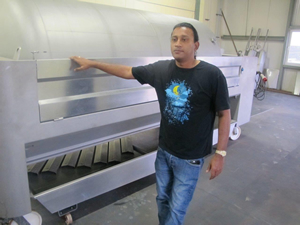 Located in Karnataka, off the Bangalore Mysore Highway, 120 kms away and 3 hours drive southwest of the cosmopolitan city, Alpine Wineries is co-owned and run by Raghvendra Gowda who comes from a family in the diverse business of liquor distribution, sugar from molasses, spirits, hotels, granite and real estate. The winery has been an enigma for the last couple of years after the wines were first spotted in the market. They excelled in tasting but fared poorly in marketing and availability even in Bangalore. Their quality has been getting better even as the supply in the market has become a mere tickle. Located in Karnataka, off the Bangalore Mysore Highway, 120 kms away and 3 hours drive southwest of the cosmopolitan city, Alpine Wineries is co-owned and run by Raghvendra Gowda who comes from a family in the diverse business of liquor distribution, sugar from molasses, spirits, hotels, granite and real estate. The winery has been an enigma for the last couple of years after the wines were first spotted in the market. They excelled in tasting but fared poorly in marketing and availability even in Bangalore. Their quality has been getting better even as the supply in the market has become a mere tickle.
The winery has been under the radar of delWine since 2011 after I met Stéphane Derenencourt, their consultant winemaker with fast ascending reputation as the French flying winemaker, at the World Wine Symposium 3 editions ago at Villa d’Este. He was very excited about the project and filled me in with technical details. Coming from a man who won’t enter a project that was not stimulating and success-worthy, it was an exciting new wave project, it seemed.
But his excitement had been waning if not the interest, as I gathered last year and last month when I met him as usual at the WWS. What he could not explain properly, the rumour mills in India filled me in. The company was closing down due to financial difficulties or personal family issues, one heard everywhere. My repeated requests to visit the winery were diplomatically turned by Raghvendra as he was available more in Austria than in India and every time I visited Bangalore, he was away.
It was therefore, a big factor in my scheduling a visit to Bangalore last month-end as he confirmed that he would be at the winery during my planned visit, even if it meant a mere four-hour pit stop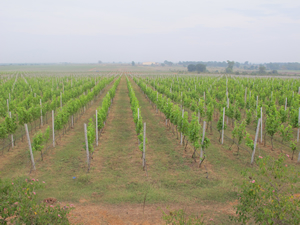 for me in Delhi as I returned from a trip to Amsterdam, only to straighten my back and pick up a fresh pre-packed bag in the morning. It was a privilege to learn later that he even postponed his trip to Singapore since he had confirmed to me and to make sure he would be present to take me around the vineyards and the winery. for me in Delhi as I returned from a trip to Amsterdam, only to straighten my back and pick up a fresh pre-packed bag in the morning. It was a privilege to learn later that he even postponed his trip to Singapore since he had confirmed to me and to make sure he would be present to take me around the vineyards and the winery.
The 3-hour drive turned to over 4.5 hours as the Heritage Winery producing large quantities of fortified wine they simply call Red Wine, suddenly appeared on the Mysore Highway and like a kid who cannot resist a sweetshop I could not help talking to the owner, Mr. Venkatram Ready and requesting the driver to take a detour for a quick visit to the winery which has been a successful model of wine tourism in Bangalore so far.
When I met Raghu after we finally reached his pad, a make-shift building erected beside the experimental 45-acre vineyard site, the first question I shot at him was whether the rumours were true and they were about to close the winery and/ or were contemplating selling it off. Raghu, who looks more like a musician than a multi-millionaire, simply laughed and said it was utter nonsense although he did concede that the marketing had taken a back seat for the time being. ‘We have finished the first round of raising capital- between my family and the bank. Second round has to be infused now for marketing which is on hold for now. There are other proposals, but we feel comfortable at the moment and don’t plan a harsh step.’
One such proposal in the pipeline is infusion of funds by Ravi Viswanathan whose Indian hospitality-centric funds have invested in similar projects including Sula and Grover and recently in Saha Signature Restaurant in Singapore in partnership with Abhijit Saha of Caperberry and Fava fame in Bangalore. Unwilling to discuss details and status of the talks naturally, he did confirm that he would be meeting Ravi n Singapore to discuss the possibilities further. He was definite that the winery or the vineyards would not be sold. He is keen to have a free-hand in running the winery though. ‘This is my baby and I have spent years on experimentation and bringing it to this level and I have no intention of changing the course of making excellent quality wines-best suited to our terroir.’
It was later at the winery about a kilometre away that I realised that there was no marketing activity in the domestic market-there is not even any staff for marketing. The Rs.40-crore winery (excluding the vineyards which belong to him, he says) is currently a white elephant in the absence of any revenues from the sale of wine.
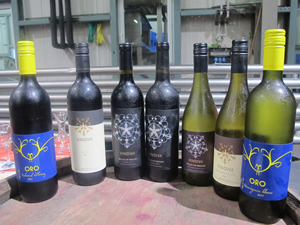 A very intelligent, passionate and focussed Raghu was frank enough to admit that there were some family issues that should be resolved shortly. In the meantime the crushing was going on and he was getting ready for the crush soon. He was candid enough to admit that the land – a full 1250 acres of it and mostly in a single parcel, a record for any winery in India, was an inherited property bequeathed to his mother and eventually transferred in his name through a company, whereas the winery was a family holding with his father and brother as partners. About 225 acres have been already planted including the 45 acres of experimental vines. A very intelligent, passionate and focussed Raghu was frank enough to admit that there were some family issues that should be resolved shortly. In the meantime the crushing was going on and he was getting ready for the crush soon. He was candid enough to admit that the land – a full 1250 acres of it and mostly in a single parcel, a record for any winery in India, was an inherited property bequeathed to his mother and eventually transferred in his name through a company, whereas the winery was a family holding with his father and brother as partners. About 225 acres have been already planted including the 45 acres of experimental vines.
The Miracle Winery
Without going into the personal issues which undoubtedly have cast some clouds on the continuation of business in the present structure and form, what he has created at the winery situated near River Kaveri is not short of miracle. This has been with the help of Derenencourt who made several visits, digging up soil at multiple spots and suggesting varieties to grow, he says. ‘He is totally involved in the project, be it the equipment, barriques and even details like the grains in the wood and seasoning of the oak used in them. It is to Alpine’s credit that the Kaveri Valley Appellation has become a legal reality in Karnataka.
The winery may not be very impressive from outside as of now but once you enter inside, you feel like you have entered a goldmine of wine processing. The state-of-the-art equipment has been used from the grape to the bottle including the pipeline insulations, valves and even the nuts and bolts and pumps. ‘Once installed, we don’t want any maintenance problems’, says Raghu who has ensured that it is a world-class winery. Design of the whole building and winery was done in Germany, he says admitting he has spent Rs. 35-40 crores on the winery alone.
There are 4 state-of-the art weather stations in the vineyard that are connected online to the University of Basel that gives an hourly report about weather among other variables. Variables like Wind direction, rain fall, leaf fitness, humidity can be all measured. Crop specific stations give you forecasts about Downy, Powdery mildew, Odium, leaf virus etc and warn you of such problems. ‘Based on the size of the rainfall etc by using an App from iMETOS, the agricultural weather station manufacturers, they can warn me hourly wherever I am –through a mobile phone app or I Pad about any impending disease a fortnight in advance making us take the corrective action,’ says Raghu who chooses to live a simple life on the farm away from the Bangalore hubbub, whenever he is in India and connected with the internet devices when in Austria.
To study the characteristics of grapes, he has imported a special machine costing €39,000 whereby one can squeeze the drop of a grape in the machine and get 9 parameters in 90 seconds. ‘We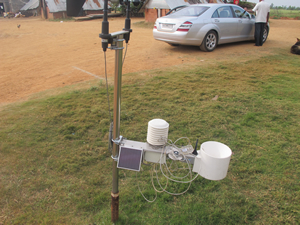 were the first ones in India to import it. It took us 2 years to calibrate the machine by sending the reports on 100-120 tests to Bordeaux to make a cluster of readings as benchmark.’ He believes in getting all the tests done in-house as the quality on outside testing turned out to be really bad and inaccurate. were the first ones in India to import it. It took us 2 years to calibrate the machine by sending the reports on 100-120 tests to Bordeaux to make a cluster of readings as benchmark.’ He believes in getting all the tests done in-house as the quality on outside testing turned out to be really bad and inaccurate.
He spends half the time in Vienna where he has already set up Alpine Wineries Gmbh and plans to sell his wines across Europe. ‘The market response based on tastings has been very encouraging and I am sure we shall be successful in breaking the barriers for extensive exports as our samples have been well received.’ In fact, the company website lists only Vienna addresses for the product availability. Interestingly, it is the only wine website in India which is in French and German language, besides English.
Wine Tourism
Raghu is keen to start Wine Tourism and a restaurant. ‘A lot of people already travel to this area during weekends. There is a Tiger Reserve with about 250 tigers, fishing, water- falls, bird sanctuary are a few other attractions. With a proper planning they will be happy to come to Alpine to spend a few days.’
‘We have already organised tastings for Overseas Women’s Club, Alliance Francaise which brought 75 students for tasting; we recently hosted a photography group. Manipur Global group had 600 people come in 3 days,’ he says. Explaining the current format he adds, ‘We take them around the vineyards, taste wines and serve lunch.’ There is no restaurant yet and he clarifies that lunch is prepared by the local ladies who had done the same for me too-that’s the home-cooked food he eats regularly.
But he also explains his plan of making a tasting room with an adjoining wine shop where people can drive through and pick up the wines and leave. He has an unparalleled strength of the ability to host an annual wine and music fest, on the lines of Sulafest. He is a musician and has a lot of space within the land that can easily accommodate temporarily thousands of wine lovers and music fans from and around Bangalore known for its love for music concerts.
Product Range
Currently the 400,000 liter capacity winery is commissioned and fully operational. ‘I am happy with the way the project has turned out and I have no plans to expand the capacity at the moment,’ he says. There are 3 distinct product ranges: ORO is an entry level label that sells for around Rs. 450. VINDIVA Classic is for the discerning customers at around Rs 685 whereas the VINDIVA Reserve labelled as Valley of Dreams is priced at around Rs.875 for connoisseurs.
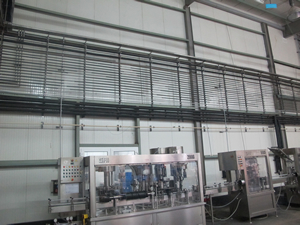 There are currently 6 labels-2 in ORO, Vindiva Classic and Vindiva Reserve-Valley of Dreams, each–whites are Sauvignon Blanc and reds are Shiraz. But a whole lot of vines are being channelized into wines and the expanded range once available will be very respectable-with Chardonnay ready for the christening in the complete range. There are currently 6 labels-2 in ORO, Vindiva Classic and Vindiva Reserve-Valley of Dreams, each–whites are Sauvignon Blanc and reds are Shiraz. But a whole lot of vines are being channelized into wines and the expanded range once available will be very respectable-with Chardonnay ready for the christening in the complete range.
He is looking at making wines from wine grapes at lower prices as well- where the yield is 12 tons an acre. With the distilleries within the family, fortified wines can be added any time. Alpine also plans to make Ice-wine by freezing grapes in the refrigerated containers although I explained to him that it would be illegal to call it Ice-wine according to international norms. He uses superior corks from Portugal for the Vindiva reserve labels; the bottles are from St. Gobain in France. Screwcaps are being used for the Oro range and white wines as well as the Vindiva Classics.
Wines Tasted
Proof of the pudding is in eating-proof of wine quality is in its tasting. So we sat down in the winery that was turned into a make-shift tasting room complete with a short AV presentation and concertos on piano to get us into the mood.
White wines
We stated with ORO Sauvignon Blanc 2011-slightly sweet but at Rs. 450 a good buy for the novice. This was followed by Vindiva Sauvignon Blanc 2011-very fresh and crisp after 3 years, low on alcohol at 12%-nice. Vindiva Reserve 2012 with a 5-10% of Sauvignon Gris was complex and fuller body and a nicer structure. We also tasted several Reserve wines from the tank, starting from Sauvignon Blanc 2012. The acidic structure was excellent. None of the overpowering herbaceous notes one has to traverse through the Nashik SBs. A shade of orange peel made it fruity-can be laid up for 5 years.
Chardonnay has not been out in the market. Therefore it was a treat to taste Chardonnay 2013 with 20-25% Viognier in the blend (they plan to call it a varietal). No oak so far in this or any 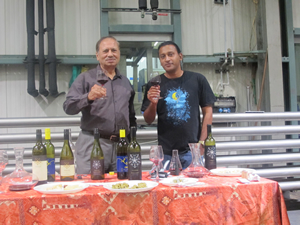 other whit e wines so far but Raghu says they will start experimenting with the 2015 harvest. It was quite stringent and bitter. Ditto with Chardonnay 2014 which Stéphane says was a good vintage. I found this also stringent but Raghu feels it will mellow down once in the bottle with lay down for a while. I hope so. other whit e wines so far but Raghu says they will start experimenting with the 2015 harvest. It was quite stringent and bitter. Ditto with Chardonnay 2014 which Stéphane says was a good vintage. I found this also stringent but Raghu feels it will mellow down once in the bottle with lay down for a while. I hope so.
To me the pleasant surprise was Vermentino Marsanne 2013 with a 70/30 blend. It was very low in alcohol-less than 13%. There were notes of slight bitterness due to Vermentino but it was quite a complex wine and will be adored by connoisseurs. Two Roses we tasted were experimental but with beautiful colour. After a bit of tweaking they will make a great thirst quenchers in summer.
Alpine Red and Grand Reserve
The complete spectrum of Shiraz wines was laid out in front-and they were generally very pleasing wines and meet the market expectation of very good quality image Alpine has established. But it’s wines like Alpine Grand Reserve (Cabernet Franc-Cabernet Sauvignon) that will bring to the fore Alpine as a bold and adventurous wine producer with a focus on new varietals, but of excellent quality so that the connoisseurs may enjoy them at all times. Made in 35% oak and aged for 6-12 month in new and old oak, this is a blend that will make it a very special wine. 40,000 liters of it are in the tank and have been loved by anyone who has tasted them.
Another sweet red wine that we tasted is truly mind blowing. It will find fewer takers due to the uniqueness of wine but at around Rs. 1500 for a half bottle it will be a steal for connoisseurs.
Raghvendra Gowda is not short of idea or going all the way with experimentation. He has grandiose plans for his winery. But unless the next phase-marketing starts soon, everything could crumble. Raghu and his family are sitting on a goldmine but they have to pan the gold it and pan it properly and fast. Next few months will tell whether potentially the most rewarding winery is able to create the market and encash on its inherent strength. We will be watching very closely.
For a virtual visit to the winery, click
Subhash Arora
Voluntary Disclosure: Transportation to the winery was kindly provided by Alpine-editor |